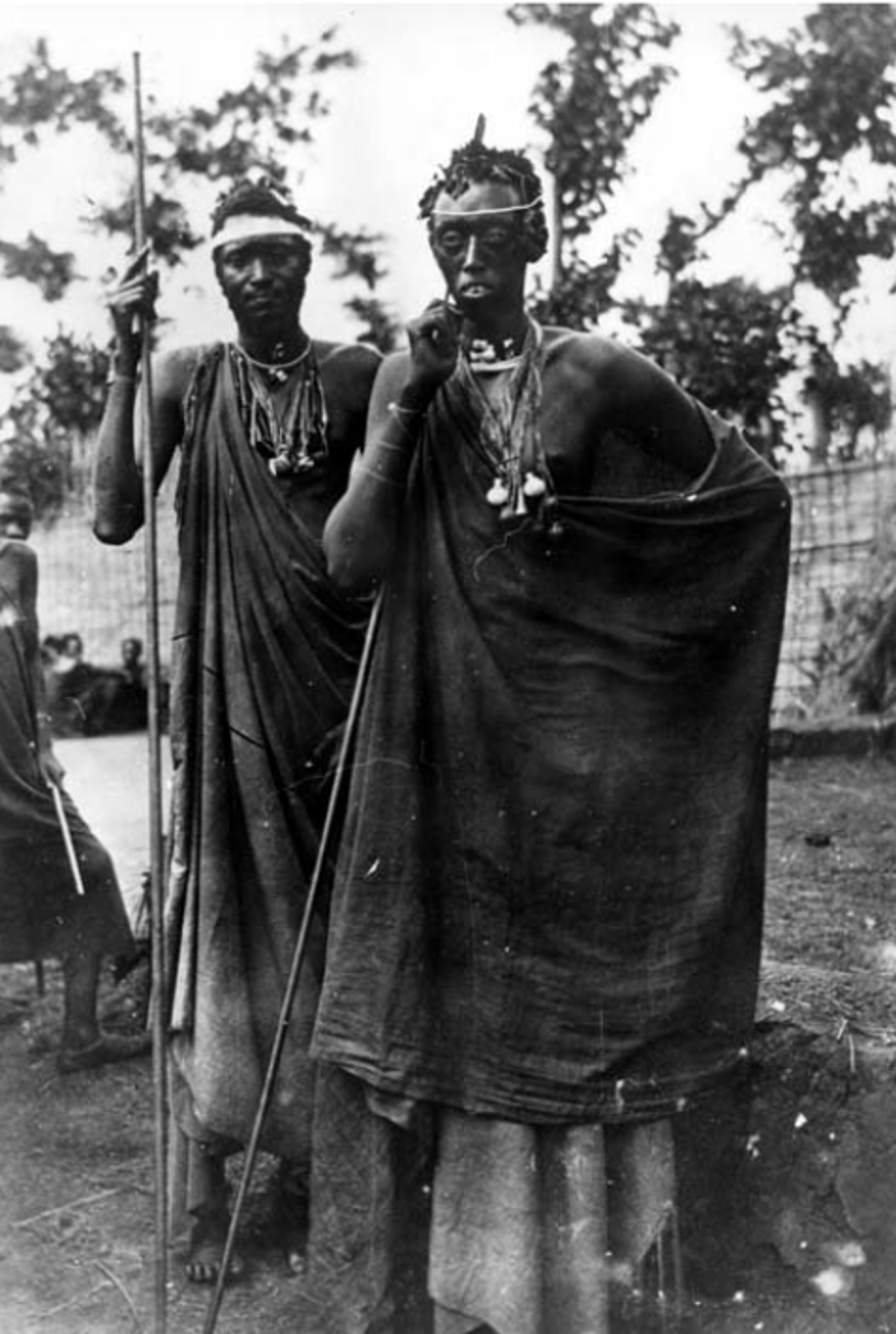A poster boy of the early 20th century (Daudi Chwa)
Sometimes
the history behind a picture is more interesting than the picture
itself. This picture of the Bugandan king Daudi
Chwa II., who came to power as a one-year old boy in 1897, is
from a book by the German missionary Johannsson. According to the author, this picture of the Bugandan king was
to be found in many royal palaces of interlacustrine rulers at the
beginning of the 20th century.
Why did
the picture a young king became so admired in region?
At the
end of the 19th century, the kingdom
of Buganda emerged as the most powerful state in the region. It
controlled most of the Lake Victoria, where their flotillas of
hundreds of canoes became a feared instrument of regional power
politics. Many chiefs regularly paid tribute to the Bugandas to avoid
the raids by the Bugandans, but sometimes with only little success.
The Bugandans often intervened in succession struggles of the
neighboring kingdoms to extend their influence over the region.
The
kingdom was not only a political, but a cultural center, too.
Especially the culture of Bugandan court was a model that was
followed by many chiefs in the region. One evidence is the adoption
of titles like katikiro (Prime Minister) in the Southern region of
Lake Victoria.
Under
the rule of Mtesa
(1856 to 1884), the kingdom became an important hub for the regional
caravan trade. Traders from the coast arrived at the kingdom as early
as in the 1840s. Under Mtsea's rule they established a permanent
presence, many Bugandans converted to the Muslim faith. Even the king
took lessons with Muslim scholars. Christian missionaries arrived in
1879. First it were Catholics from the White Fathers, later
protestants from the UMCA (Universities Mission to Central Africa).
Again, the new faith attracted many Bugandans. When Mtesa died in
1886, different factions fought for the throne. This was not uncommon
in Bugandan history. What, however, was new, was that religion played
an important role. This led to nearly ten years of civil war between Muslim and Christian factions. With British support, the Christian
faction gained upper-hand. As soon as victory was secure, new
fissions arose between Protestants and Catholics. Again the British
support was decisive in granting victory for the Protestants. Many
Catholics fled Buganda, mostly to Rwanda.
In
1896, the faction led by the katikiro Apollo Kagwa enthroned Daudi
Chwa as the new king, but the power remained firm in the hands of the
Prime Minister for many years.
 |
| The Rwandaan King Musinga (from the same book): Adopting the Bugandan model? |
With
the Anglo-German
treaties of 1890, Buganda lost its access to the southern parts
of Lake Victoria. When Germans arrived in the same year at the Lake,
some chiefs asked the Bugandans for an alliance against the foreign
intruders, but at that time Buganda was only a shadow of its former
glory. The picture, however, shows that their influence, at least in
matters of political representation, remained strong in the region
even across colonial borders. During the First World War, this
influence was restored to some degree, when Bugandan advisers were
installed by the British at the courts of some kingdoms.



Comments
Post a Comment